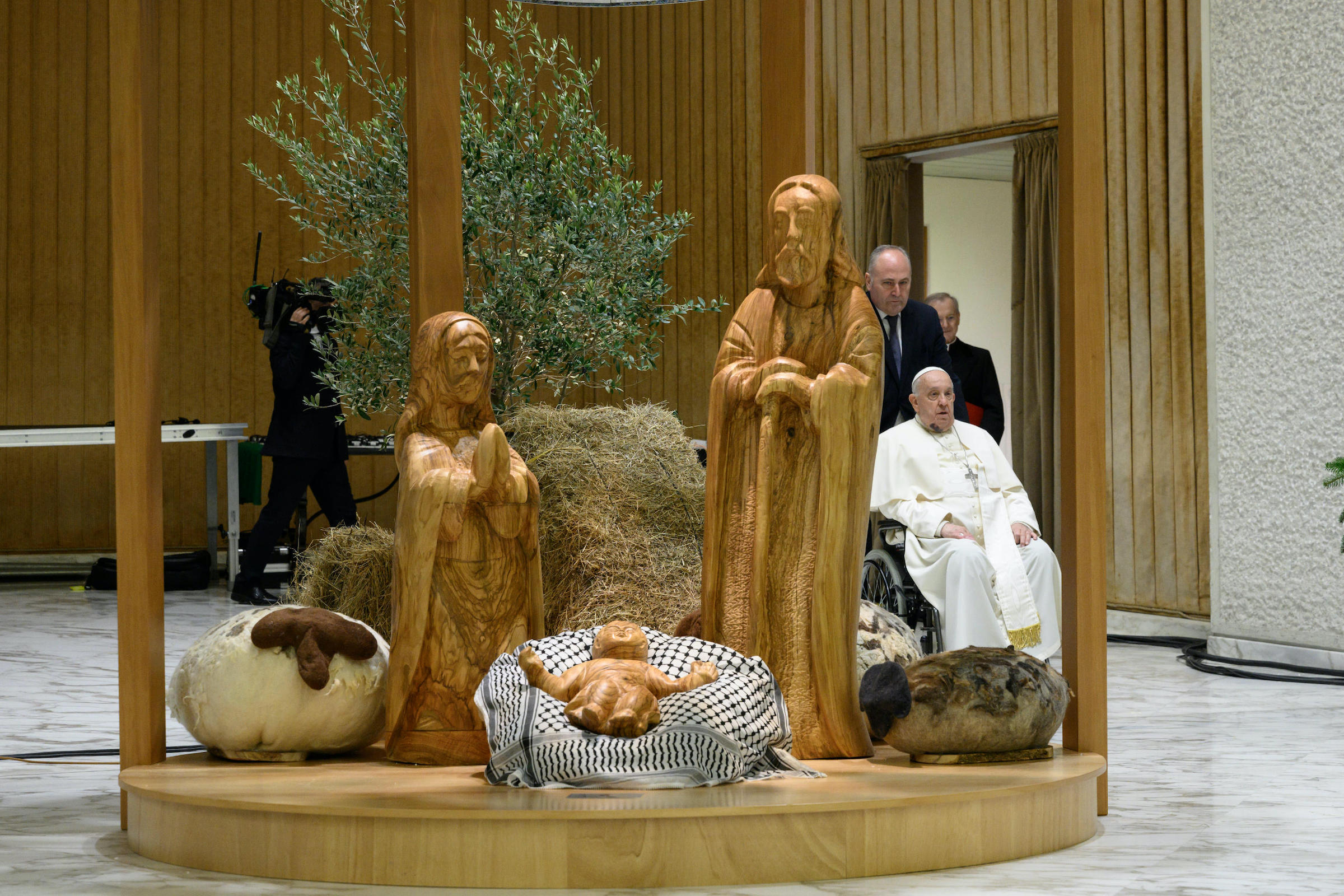Pope Francis and the Holy See drew polarized reactions across the globe after unveiling a Nativity scene featuring a wood-carved infant Jesus laying on a keffiyeh in his manger last Saturday, December 7. The symbol of solidarity with Palestine, which sparked both praise and outrage internationally, has since disappeared from the scene along with the entire manger and model of baby Jesus as of today, December 11.
Initially reported by Christian and Italian news outlets, the removal of the manger, baby Jesus, and the keffiyeh was first observed during Pope Francis’s general audience at Paul VI Hall, where only the carved figures of the Virgin Mary, Joseph, and some surrounding stuffed sheep remain.
The Nativity was designed by Johny Andonia and Faten Nastas Mitwasi, two Palestinian artists from the city of Bethlehem in the Occupied West Bank, and carved by Bethlehem artist Peter Khano from a single olive tree per cultural tradition. It was a joint gift to the Vatican from Dar al-Kalima University, the Palestinian Embassy at the Holy See, and the Higher Presidential Committee of Churches Affairs in Palestine.
Hyperallergic contacted the artists and a spokesperson for the Holy See for comment.
It’s worth noting that the Vatican and many Christians abide by the tradition of waiting until Christmas Eve to put the model of baby Jesus in his manger in their respective Nativity scenes; however, the manger itself is usually left empty until Christmas rather than omitted overall.
Further, the scene’s removal came after an outpouring of online criticism about the keffiyeh’s inclusion from pro-Israel entities, with netizens, organizations, and outlets alike accusing the Vatican of blasphemy by distorting or misrepresenting the identity of Jesus Christ as Palestinian instead of Jewish. One user on X commented that using the keffiyeh, “a garment that represents violence to Jews,” turned the Nativity scene into a site of hate for Jewish people.
Pope Francis, who has used his platform to acknowledge the death and suffering in Gaza and advocate for peace throughout the region on multiple occasions, drew outrage last month after calling for an investigation into Israel’s attacks to determine whether they constitute genocide. He has twice met with the families of hostages abducted by Hamas on October 7, and with some of the freed hostages after their release as well.
The keffiyeh, a cultural garment tied to Palestinian identity and broader Arab heritage, has been at the center of controversy in the last year. The Noguchi Museum in New York City recently barred its employees from wearing the scarf, calling it an example of “political dress” that could cause discomfort to visitors. The policy sparked various protests in solidarity with four museum staff members who were terminated after they refused to comply with it. Weeks after the 2023 attack, Christie’s auction house in London pulled two paintings by Lebanese artist Ayman Baalbaki from its Modern and Contemporary Middle Eastern Art sale after multiple complaints — though his portrayal of a keffiyeh in one painting is related to experiences of loss and displacement due to the Lebanese Civil War.

